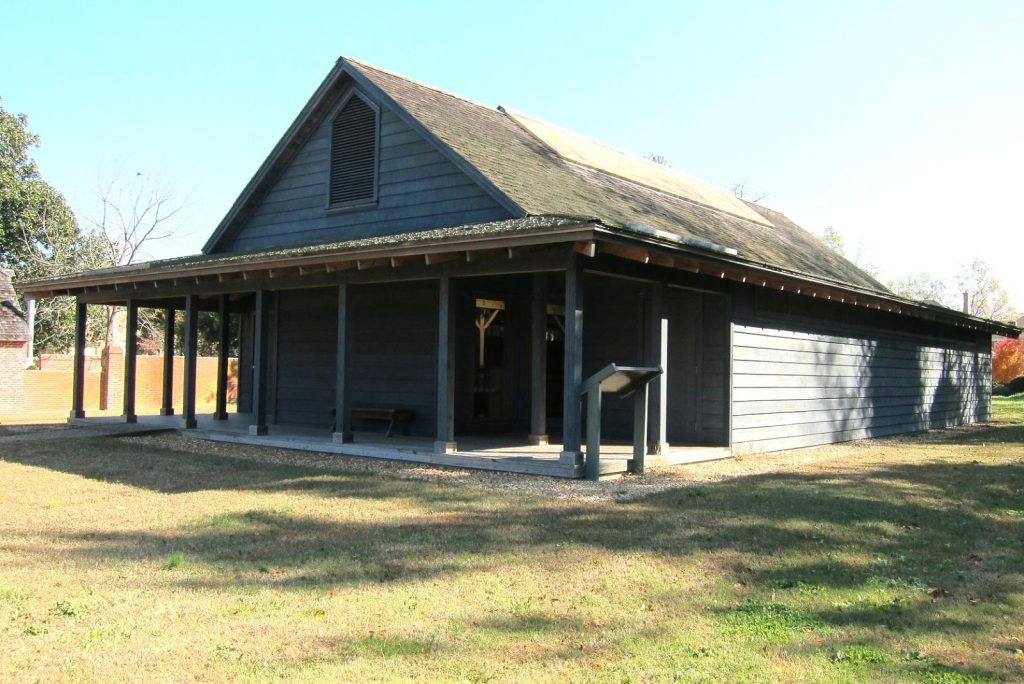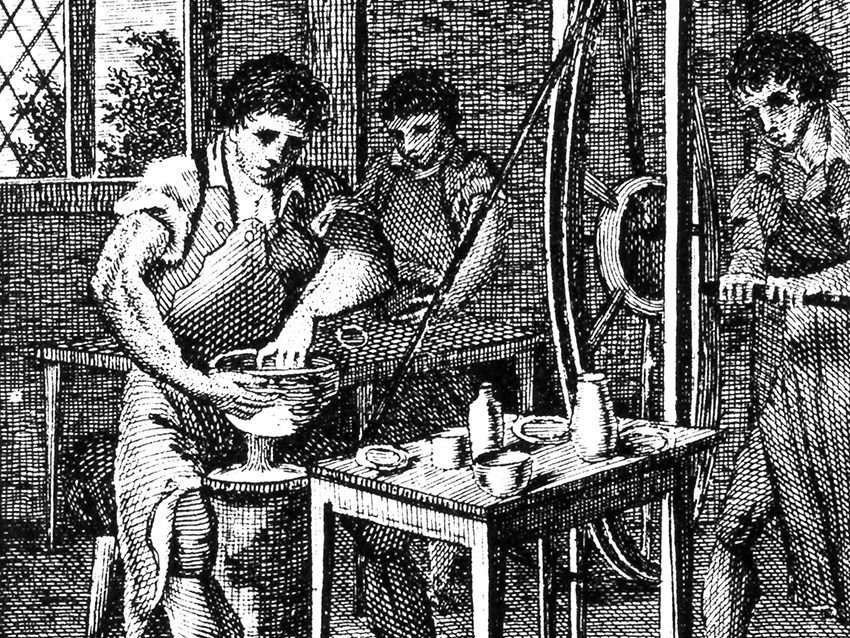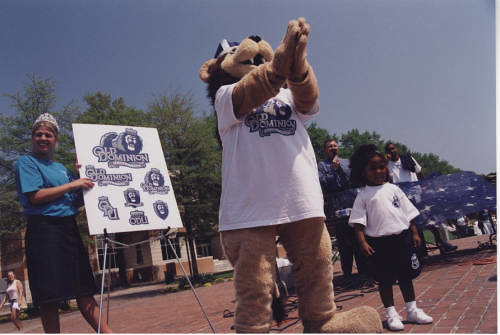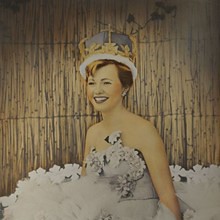By Ella Hathaway, Special Collections Student Assistant
“The Demented Lover of Lake Drummond”
Within ODU’s Special Collections and University Archives lurks not just any eerie old literary tale, but a rather local one.
Even without the presence of ghosts, the Dismal Swamp is a bizarre enough anomaly on its own, possessing a reputation for various disappearances throughout the years, with one even as recently as 2024. In fact, the archive houses an undated black-and-white video news report from a local station, WTAR, now known as WTKR. The report covers two lost marines who were last seen searching for missing hunters within the swamp.
The swamp is also known for its weird science and biological oddities. According to former ODU Professor Betty Yarborough, whose rare book The Great Dismal is stored here in the archive, she writes that “within this great Natural Phenomenon…remain remnants of ancient shapes and forms of the forest primeval… some scientists have suggested that the swamp might have been created by a meteorite…” (Yarborough 1). Yarborough also notes that the swamp is home to many unusual anomalies that differ from other swamplands. For example, most swamps possess high levels of bacteria; yet, the Dismal Swamp has a mysteriously low level of bacteria production in its water, which produces its signature brownish/amber-like coloring.
There’s no surprise that the swamp’s history and peculiarities have yielded their share of folklore. Virginia supernatural tales : Ghosts, Witches, and Eerie Doings is a novel published in 1977 by George H. Tucker. Tucker was an avid lover of local Virginia history, as he was a Maury High School graduate who penned columns for the Virginian-Pilot and was a charter member of the Norfolk Historical Society (Goodreads). Tucker’s book is imbued with popular tales and first-hand accounts of witches, hauntings, prophetic dreams, and other bizarre happenings local to Virginia. A particularly beckoning tale was one by the name of “The Demented Lover of Lake Drummond”.
The Great Dismal Swamp’s marsh-laden wetland extends from Suffolk, Virginia, all the way to North Carolina, and at its heart lies Lake Drummond, the “large cypress-bordered body of clear brown water” (Tucker). Tucker’s book recounts a centuries-old story of a young indigenous girl who lived on a farm (in what’s now considered Chesapeake) who contracted malaria and tragically died while her lover was away. When her lover returned, his grief for her drove him to delirium. Determined he could find his lost lover within the depths of Lake Drummond, he constructed a fragile raft of dead branches. As he sailed through the lake, his brittle raft disintegrated, leading him to drown. Since the story’s occurrence, countless trappers and woodsmen have claimed to have witnessed the spirits of the two lovers paddling a “spectral white canoe on dark and silent nights” (Tucker). This story, as Tucker states, is the only known Virginian ghost story to ever be written about internationally. Tucker then includes the poem written by Irish author Thomas Moore about the ghost story that haunts our very own Great Dismal Swamp.
Despite its uncanny qualities, the Dismal Swamp has been home to special wildlife and scientific miracles for thousands of years, and was even a refuge for thousands of enslaved people before the Civil War. Numerous conservation efforts have been made to preserve our Dismal Swamp, and many reports of these efforts can be found here in the archive as well!
LGBTQ+ Ghost Stories
In an October 1989 issue of Our Own is a headline titled “Halloween Special: Gay Ghost Stories”, written by Sabina Ayne. The publication contains 5 brief tales.
One of these stories is titled “Radiant Boy”. The article described the boy as a glowing apparition who appeared to gay men in the middle of the night. Seeing this boy was supposedly a foretelling of your eventual passing. The article introduced Captain Robert Stewart, who was caught in a thunderstorm and took refuge in a “nobleman’s home” (Ayne). During the captain’s slumber, he suddenly awoke to find that the “entire bedchamber was aglow with an eerie light” (Ayne). The captain suddenly saw the glowing boy, who shortly vanished. Years later, the captain went on to gain “wealth and esteem” but died tragically by his own hand (Ayne).
Upon some research, the “nobleman’s home” the captain took refuge in could have likely been the Howard Family Manor, home to John Howard. Ian Topham, a paranormal researcher of over 25 years, notes that “Traditionally the radiant boy was associated with the Howard family, if seen by a family member that person would rise to a position of great power but meet a terrible end.” (Topham). In fact, John Howard himself supposedly recorded his sightings of the ghost-boy in his own journal.
Another tale within the article tells of a young girl from Scarborough, England in 1600. The girl would frequently visit and help out at a local farm. However, the girl began sneaking off into the hayloft with the farmer’s daughter. When the farmer eventually caught the two girls together in the hayloft, he was livid. The girl was met with “furious accusations of witchcraft” and forced to leave town (Ayne). She returned to town a few years later to gather mushrooms, but was never seen again. There has since been speculation over what may have happened to the girl. After her disappearance, there were multiple supposed sightings of the girl’s ghost wandering from the farmer’s house towards the hayloft, where she would then disappear.
To read more of these stories, browse the Our Own Community Press collection in our digital archive!
Ghent Apartment Haunting
Mace & Crown article “My Apartment is Haunted by a Ghost” 1989
An article written by one Brian Powers in the October 1989 issue of the Mace & Crown is titled: “My Apartment is Haunted by a Ghost”. Powers described his experience living in one of the old apartments in Ghent, Norfolk, that was “…built in 1916…equipped with black iron fire escapes and steam heat…” (Powers). Powers noted that the first time he noticed something strange unfurling was when he had heard his roommate, or what he thought was his roommate, “come down the hallway” (Powers). However, Powers soon realized his roommate wasn’t even home. He began to notice kitchenware out of storage despite never being used, the same picture repeatedly falling every now and again, and even socks magically moving into other rooms. At first, Powers felt extremely paranoid, and “that anything misplaced was a deed by a ghost. It gave me the creeps” (Powers). However, Powers came to accept his new roommate, even claiming the ghost had tried to fix his broken doorknob!
However true Powers’ ghost story may be, there’s no question that Norfolk (and many other areas of Virginia) are home to historic, out-of-shape buildings. Whether or not ghosts exist, there is still something especially harrowing about being inside a building that has housed visitors for centuries. This is why it may come as no surprise that other historic buildings in Norfolk and beyond have been subject to ghost sightings. Some known locations in Norfolk with alleged unearthly occurrences include the Myers Historic House, the Freemason Abbey Restaurant, and even the Wells Theater (Floyd).
Other local cities, such as Portsmouth, take advantage of their haunted houses. As it happens, Portsmouth hosts a “Ghostwalk”; a tour of various historic houses that are supposedly haunted. This event has been long-running, as there were even murmurings of the Ghostwalk in a 1986 issue of the Mace & Crown. Even if you don’t believe in ghosts, the many aging and lively structures around the area serve as a befitting setting for the Halloween season!
“Ghost Walk” 1986 issue of the Mace & Crown
Sources:
- Ayne, Sabina. “Gay Ghost Stories.” Our Own Community Press, Oct. 1997.
- Floyd, Sarah. “Haunted Norfolk – VisitNorfolk.” VisitNorfolk, 15 Sept. 2023, www.visitnorfolk.com/blog/haunted-norfolk/. Accessed 10 Oct. 2025
- “George Holbert Tucker.” Goodreads.com, 2021, www.goodreads.com/author/show/241574.George_Holbert_Tucker. Accessed 14 Oct. 2025.
- Ian. “Corby Castle – Mysterious Britain & Ireland.” Mysteriousbritain.co.uk, 26 July 2008, www.mysteriousbritain.co.uk/hauntings/corby-castle/. Accessed 10 Oct. 2025.
- Powers, Brian. “My Apartment Is Haunted by a Ghost.” Mace & Crown, 26 Oct. 1989.
- Tucker, George Holbert. Virginia Supernatural Tales: Ghosts, Witches, and Eerie Doings. 1977.
- Yarborough, Betty. The Great Dismal. Norfolk County Historical Society of Chesapeake, Virginia, 1965.









































